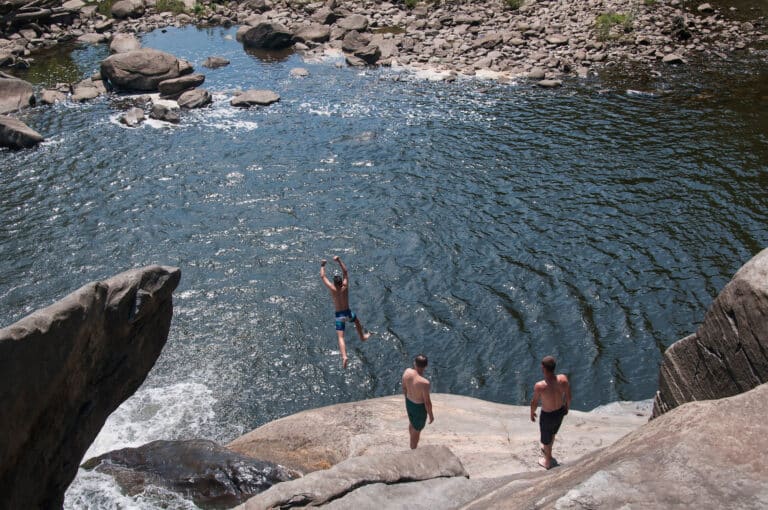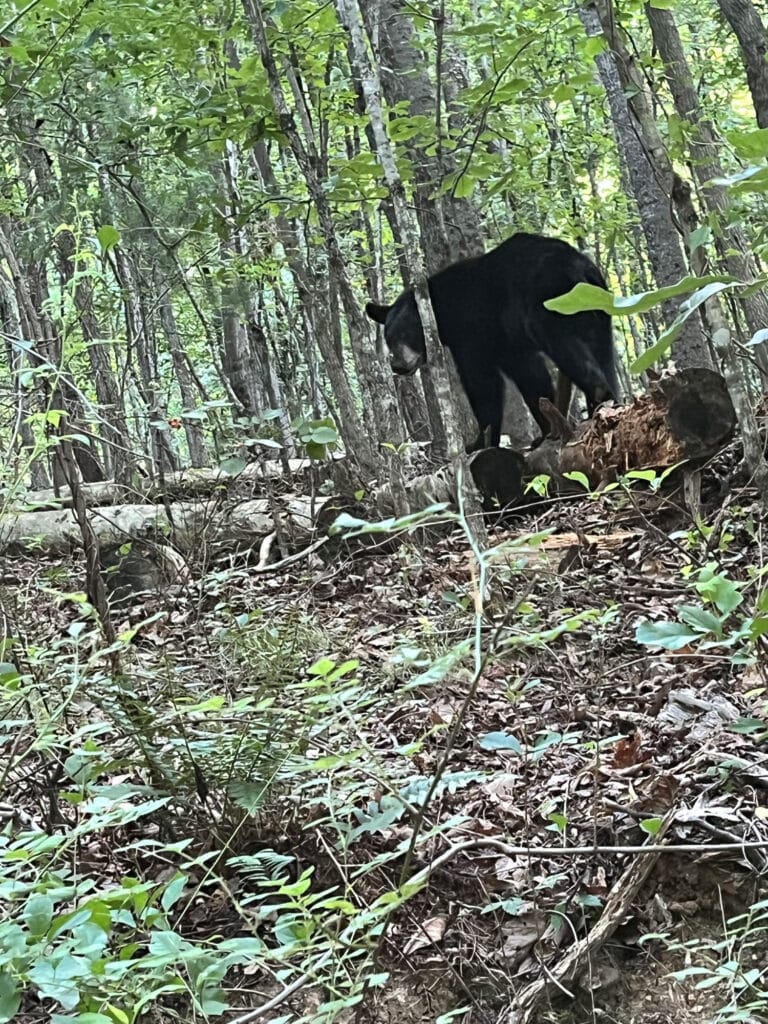Winding its way from Georgia to Maine, the Appalachian Trail welcomes over two million hikers each year, who enjoy the beloved footpath’s scenic seclusion. But currently, power companies spearheading two controversial natural gas pipelines, the Atlantic Coast Pipeline (ACP) and the Mountain Valley Pipeline (MVP), are fighting for permission to cross the A.T., and the debate over whether the Forest Service has authority to issue the permits required for the pipeline’s construction has made its way to the Supreme Court. The high court’s decision could change the future of how the trail is managed.
A timeline of Appalachian Trail pipeline projects
In 2018, developers of both the Atlantic Coast Pipeline and Mountain Valley Pipeline were granted permits by the U.S. Forest Service under the Mineral Leasing Act authorizing both pipelines to cross the A.T. on national forest lands. Construction on the $7.5 billion ACP began in May 2018 in West Virginia. If the ACP is finished, it will carry natural gas 600 miles between West Virginia and eastern North Carolina and cross the Appalachian Trail near the Three Ridges Overlook on the Blue Ridge Parkway in Nelson County, Va. The path of the proposed MVP is 300 miles long, running from southern Virginia to northwestern West Virginia and crossing the A.T. within a quarter-mile of Virginia’s Peters Mountain Wilderness.
In December 2018, Cowpasture River Preservation Association, et al. v. United States Forest Service was brought to the Fourth Circuit Court of Appeals. The lawsuit contended that the U.S. Forest Service did not have the authority to issue the special use permits that gave the ACP and MVP authority to cross the trail. Upon hearing the case, the Fourth Circuit vacated the permit, determining that the Forest Service did not have the legal authority required to issue a permit under the Mineral Leasing Act.
Under the National Trail System Act, the Appalachian Trail is administered as part of the National Park Service. The court concluded that only the National Park Service could issue a permit under the Mineral Leasing Act. Because federal law dictates that it takes an Act of Congress to grant the Park Service the authority to issue such a permit, the Fourth Circuit determined that it is not legally possible for a natural gas pipeline to be permitted on federal land within the Fourth Circuit (Maryland, West Virginia, Virginia and North Carolina.) The decision put a major kink in the construction plans of the pipelines.
Unhappy with the decision by the Fourth Circuit, on June 25, 2019, Atlantic Coast Pipeline, LLC filed for a writ of certiorari from the United States Supreme Court to review the case. A writ of certiorari directs the record of a lower court, in this case the Fourth Circuit, to be delivered to a higher court for review. It’s quite rare for the Supreme Court to issue writs of certiorari, usually only doing so if the case is determined to be of critical national importance; legal novelty; or in order to solve a disagreement between federal Circuit Courts. On October 4, 2019, the Supreme Court issued its decision, agreeing to hear the Cowpasture case in 2020.
Pipeline impacts
Unsurprisingly, siting a natural gas pipeline across the Appalachian Trail has major physical impacts on the trail. “We are already seeing more visual impacts from Mountain Valley Pipeline than were identified in the environmental review process,” says Andrew Downs, Central and Southwest Regional Director at the Appalachian Trail Conservancy.
One example, says Downs, is when MVP subcontractors drove four-wheelers up and down the trail. “You can imagine it’s someone’s lifelong dream to hike the A.T. They get to this backcountry setting and it’s the first time they see West Virginia and it’s beautiful—and then to have teams of four-wheelers driving up and down [the trail] will really destroy the experience. You never forget when you have that tranquility interrupted,” says Downs.
The physical impacts to the trail are troublesome, but Downs says that one of the long-lasting implications will be the determination of whether or not the National Forest Service has the authority to issue the permits. Should the court find that the NFS does not have authority, it could change the way the entire trail is managed.
Lasting implications
“We were surprised that the Cowpasture case said that the Forest Service couldn’t authorize the permit,” says Downs. “It was our understanding, and still is, that while we disagreed with the decision that the Forest Service made, that they had the authority to issue the permits.”
Management of the 2,181-mile Appalachian Trail is “incredibly complex,” adds Downs. The trail is managed and governed by a cooperative management system based on local authority. There are 87 different land management agencies that collectively protect and manage the A.T. “You can imagine it very similar to the A.T. clubs that do management along the trail,” Downs explains. “They are all local people who know the A.T. really well because it is in their backyard and can manage it best.”
The cooperative management system among agencies, explains Downs, works the same way and has been successfully protecting the trail for the past 50 years. “We have always felt that the Forest Service, and all of the local land management agencies, has the responsibility to manage the A.T. across their land.”
If the management system changes, it could be a slippery slope. “One of the concerns we have is that Cowpasture would change the calculus,” says Downs. “When you make even a small tweak to a vastly complicated system you can have really big impacts.”
The Supreme Court’s decision over whether the National Forest Service has the authority to issue permits allowing infrastructure to cross the trail on land that they manage is yet to be seen. Slated to hear the case in mid-February (when this issue went to press), the court could impact the A.T. significantly. “There are physical impacts which I think are very significant and unprecedented,” said Downs, “but there are also impacts to the management structure of the trail and those will have longer-lasting negative outcomes for all national scenic trails.”








